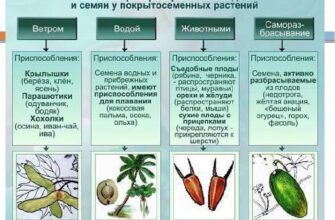Перевод атрибутивных словосочетаний
Атрибутивные конструкции с внутренней предикацией
Особый интерес с точки зрения перевода представляют атрибутивные конструкции, атрибутами в которых выступают словосочетания или предложения.
There is a sort of Oh-what-a-wicked-world-this-is-and-how-I-wish-I-could-do-something-to-make-it-better-and-nobler expression about Montmorency. (Jerome K. Jerome)
Основные приемы перевода английских препозитивно-атрибутивных словосочетаний
Antifriction bearing lay-out diagram
1) ключевое слово
2) определения к ключевому слову:
3) дальнейшие смысловые уточнения:
Bank Credit Regulation Committee
1) Переводим последнее слово
2) разбиваем все словосочетание на смысловые группы:
| plant (существительное) | construction (существительное) | project (существительное) |
| mass (существительное) | production (существительное) | techniques (существительное) |
| all | Amalgamated Union of Engineering and Foundry Workers | members |
| The Italian Constitution | guarantee | of personal freedom |
| Union of Post Office Workers | General Secretary |
| supersonic | vertical take-off | bomber |
Препозитивно-атрибутивные словосочетания могут переводиться:
а) прилагательным с существительным
split hair accuracy —
б) существительным в родительном падеже
в) существительным с предлогом
г) с перестановкой членов атрибутивной группы
Данный прием используется в тех случаях, когда дословный перевод невозможен из-за отсутствия в русском языке соответствующего сущ или прил либо невозможности их сочетаемости друг с другом;
д) переводом одного из членов атрибутивного словосочетания при помощи группы слов. При этом могут вводиться дополнительные компоненты, а структура словосочетания может меняться:
nuclear dumping site —
solar power station —
В тех случаях, когда в русском языке нет непосредственного соответствия языковым единицам английского языка, применяется калькирование. — полностью воспроизводятся все составные части словосочетания:
Перевод групп с внутренней предикацией часто вызывает необходимость выделять определение в отдельное предложение:
A few months later she issued a marry-me-or-else ultimatum. —
Если такие словосочетания не несут особой стилистической нагрузки, они могут переводиться теми же способами, которые используются и при переводе обычных атрибутивных групп:
a life-and-death necessity —
an all-night coffee shop —
Практические задания
Переведите английские препозитивно-атрибутивные словосочетания.
Green house effect —
a three-nation tour —
high-income developed countries —
national security adviser —
waste reduction measures —
energy-efficient heating systems —
environmental assessment project —
young offenders institutions —
Проанализируйте развитие цепочки слов и переведите ее на русский язык.
treaty negotiations break
ban treaty negotiations break
test ban treaty negotiations break
weapon test ban treaty negotiations break
nuclear weapon test ban treaty negotiations break
Geneva nuclear weapon test ban treaty negotiations break
Three-Power Geneva nuclear weapon test ban treaty negotiations break
Переведите следующие словосочетания. Прокомментируйте способ их перевода на русский язык.
А Б
transition period consumption level
a five-time winner alcohol consumption
anti-corruption measures acceptance report
cruise missiles crime rate
non-waste technology wildlife habitat
high-speed Internet strategic arms cuts
consumer demand healthcare officials
nuclear chain reaction national health standards
single mandate constituency prison building program
soil fertility restoration
В Г
golf course transplant woman
export ban three-men orchestra
cereal prices nuclear proliferation
search warrant terrorist suspect
corruption charges maternity services
two-thirds majority Euro members
terrorist trial private school parents
Middle East conference three-nation resolution
document shredder ozone-protection measures
pollution control equipment free-market approach
per capita food production chemical weapons facilities
suicide truck bombers
Д
NATO Rapid Reaction Force
good will mission
Текст 1
The Role of the UN
The UN today is both more and less than its founders anticipated. It is less because, from the close of World War II to the end of the 1980s, the rivalry between the United States and the USSR exposed the weakness of great-power unanimity in matters of peace and security. It is more because the rapid breakup of colonial empires from the 1940s to the 1970s created a void in the structure of international relations that the UN, in many areas, was able to fill.
Even during the period of superpower rivalry, the UN helped ease East-West tensions. Through its peacekeeping operations, for example, it was able to insulate certain areas of tension from direct great-power intervention. The UN also established several committees on disarmament and was involved in negotiating treaties to ban nuclear weapons in outer space and the development of biological weapons. The International Atomic Energy Agency has helped to control the proliferation of nuclear weapons by inspecting nuclear installations to monitor their use. Major arms-control measures, however, such as the Partial Test Ban Treaty (1963), the Treaty on the Non-Proliferation of Nuclear Weapons (1968), the Strategic Arms Limitation talks (SALT) of 1972 and 1979, and the Strategic Arms Reduction treaties (START) of 1991 and 1993 were achieved through direct negotiations between the super powers.
Beyond providing peacekeeping forces, the UN has played a wider role in the transition to statehood in a few critical areas. It has been a major forum through which newly independent states have begun to participate in international relations, giving them opportunities to represent their interests outside their immediate regions, to join coalitions of nations with similar interests, and to escape the limited relationships of their earlier colonial connections. One problem facing the UN today is the feeling in some Western nations that it has become an instrument of the developing countries and thus is no longer a viable forum for fruitful negotiations.
The United Nations is not a world government; rather, it is a very flexible instrument through which nations can cooperate to solve their mutual problems. Whether they do cooperate and use the UN creatively depends on how both their governments and their peoples view relations with others and how they envision their place in the future of humankind.
Текст 2
BNFL under Fire on Waste Storage
Safety experts have expressed alarm at significant changes to nuclear waste handling procedures being introduced by British Nuclear Fuels. The revisions include plans for a series of unmanned radioactive waste dumps up and down the country for debris from its ageing power stations.
It has also emerged that the company is scaling back plans to build protective shells around nuclear reactor buildings — which are to be left for periods of up to 135 years after closure — and that reactors and waste stores are to be unmanned and monitored from a central point.
MPs, environmental campaigners and senior industry safety experts say the plans would expose communities to danger and threaten the environment.
The dumps will be established on the sites of BNFL’s 11 Magnox power stations — built from the Fifties onwards around the coast of Britain — which are scheduled to close over the next 20 years. They will take «intermediate level» radioactive waste (ILW) — the second most perilous category, which includes items such as contaminated fuel casings, sludges, resins and discarded reactor equipment.
They are expected to remain in place for at least 40 to 50 years and potentially a lot longer, since there are no plans for a permanent store for the nation’s nuclear waste. A Green Paper on what to do next, originally planned for the summer, is now expected to be published at the end of October.
According to BNFL, the waste will be put in concrete and placed in purpose-built or modified buildings. A spokesman said: «A separate company whose raison d’etre is long-term storage is better placed to deal with it, but this is not our main business.»
Nuclear safety expert John Large told The Observer, «What is happening is extremely worrying. It is one thing having a working nuclear power station, but it is quite another to store waste for long periods on sites not originally designed for it.»
Large also said he had serious concerns about proposals to scale back on protective cladding for reactors, which BNFL plans to leave for around 100 years after they are shut down.
BNFL has also said it no longer plans to use high durability cladding materials, but would use standard materials to reinforce existing buildings and re-clad where necessary. Large said that would weaken the protection of the reactor cores.
David Chaytor, MP for Bury North, said: «No-staffing at these sites is unacceptable.»
Текст 3
Ethanol and Water
Officials in Tampa, Florida, got a surprise recently when a local firm building the state’s first ethanol-production factory put in a request for 400,000 gallons (1.5m litres) a day of city water. The request by Envirofuels would make the facility one of the city’s top ten water consumers overnight, and the company plans to double its size. Florida is suffering from a prolonged drought. Rivers and lakes are at record lows and residents wonder where the extra water will come from.
They are not alone. A backlash against the federally financed biofuels boom is growing around the country, and «water could be the Achilles heel» of ethanol, said a report by the Minneapolis-based Institute for Agriculture and Trade Policy.
The number of ethanol factories has almost tripled in the past eight years from 50 to about 140. A further 60 or so are under construction. In 2007 President George Bush signed legislation requiring a fivefold increase in biofuels production, to 36 billion gallons by 2022.
This is controversial for several reasons. There are doubts about how green ethanol really is (some say the production process uses almost as much energy as it produces). Some argue that using farmland for ethanol pushes up food prices internationally (world wheat prices rose 25 per cent this week alone, perhaps as a side-effect of America’s ethanol program). But one of the least-known but biggest worries is ethanol’s extravagant use of water.
A typical ethanol factory producing 50m gallons of biofuels a year needs about 500 gallons of water a minute. Most of that goes into the boiling and cooling process, which is similar to making beer. Some water is lost through evaporation in the cooling tower and in waste discharge.
The good news is that ethanol plants are becoming more efficient. They now use about half as much water per gallon of ethanol as they did a decade ago. New technology might be able to halve the amount of water again, says Mike Fatigati, vice president of Delta-T Corp, a Virginia company which has designed a system that does not discharge any waste water. But others are skeptical. Perhaps ethanol just isn’t as bio-friendly as it looks.
Перевод атрибутивных словосочетаний
Атрибутивные словосочетания описывают качества, свойства, признаки => устанавливают, по каким параметрам происходит выделение вещи из класса ей подобных. Являются самыми распространенными в английском языке.
В зависимости от того, что может выступать в качестве атрибута, выделяются 4 типа атрибутивных конструкций:
1) атрибутивные конструкции с адъективным атрибутом (в качестве атрибута чаще всего выступают имена прилагательные, а также слова других частей речи в функции определения);
2) атрибутивные конструкции с глагольным атрибутом (в качестве атрибута используются глаголы в разных своих формах);
3) атрибутивные конструкции с субстантивным атрибутом (роль атрибута выполняет имя существительное);
4) атрибутивные конструкции с внутренней предикацией (в качестве атрибута выступают фразы или предложения).
3) и 4) представляют наибольшую сложность и интерес для перевода с англ яз на рус.
Субстантивные атрибутивные словосочетаниясостоят из 2 сущ: 1 = определение к 2.
разновидности:
отсубстантивное прил + сущ (an American citizen);
сущ + сущ (defense pacts);
сущ в притяжат падеже +сущ в общем падеже (Isabelle’s laughter);
сущ + предлог + сущ (the track of a fox).
В процессе речи говорящий, как правило, не ограничивается 1 определением, и перечисленные базовые структуры получают распространение с помощью прилагательного, местоимения, наречия, числительного, первого и второго причастия и их различных комбинаций.
Например: the three little baby foxes, a partially opened oak door.
=> в речи 2 разновидности: базовые и распространенные.
сущ1 + сущ2: сущ1 = определение, сущ2 = определяемое
сущ1 + сущ2+ …+ сущN: сущ1, сущ2, … = определения, сущN = определяемое
Наличие большого числа разнообразных внутренних семантических связей, которые устанавливаются между компонентами данных конструкций => многообразие способов их перевода.
Многообразие отношений, возникающих между членами атрибутивных субстантивных словосочетаний, может быть сведено к следующим:
• посессивные отношения (идентифицирующий предикат —’have’) —family album, police laboratory и др.;
• отношения ‘часть — целое’ (идентифицирующий предикат— ‘be part of’) — cage bars, apartment door и др.;
• субъектные отношения (идентифицирующий предикат —’act’) — dogfight, the Heathrow influence и др.;
• локативные отношения (идентифицирующий предикат —’be situated in/on/at/near’) — park bench, hill orchard и др.;
• объектные отношения (идентифицирующий предикат — ‘beacted upon’) — gold consignment и др.;
• темпоральные отношения (идентифицирующий предикат —’take place during / for’) — late afternoon sunlight, a day trip и др.;
• специфицирующие отношения (идентифицирующий предикат — ‘be type of) — orange trees, high-school basketball game и др.;
• тематические отношения (идентифицирующий предикат —’be about, deal with’) — another love story, next cancer report, и др.;
• отношения предназначения (идентифицирующий предикат— ‘be for’) — waste-paper basket, passenger door и др.;
• композитивные отношения (идентифицирующий предикат— ‘be made of / with’) — lace handkerchief, lamb cutlets и др.;
• компаративные отношения (идентифицирующий предикат— ‘be like, resemble’) — his rabbit nose, iron stomach, his pearly little milk teeth и др.;
• квантитативные отношения (идентифицирующий предикат — ‘indicate quantity of) — mass meeting и др.;
• результативные отношения (идентифицирующий предикат — ‘result in, lead to’) — rain pools, laugh wrinkles и др.;
• идентифицирующие отношения (элементарный предикат —’identify as’) — spinster daughter, woman doctor и др.
Замена одного из компонентов атрибутивного субстантивного словосочетания → формирование иного контекста → изменение отношений между членами всей атрибутивной конструкции.
Напр.: alligator shoes — композитивные отношения = обувь из крокодиловой кожи
horse shoes —отношения предназначения = подковы.
Пример многообразия смысловых связей между элементами атрибутивных субстантивных конструкций и их учет при переводе – сочетания разных существительных с существительным water.
Источник




